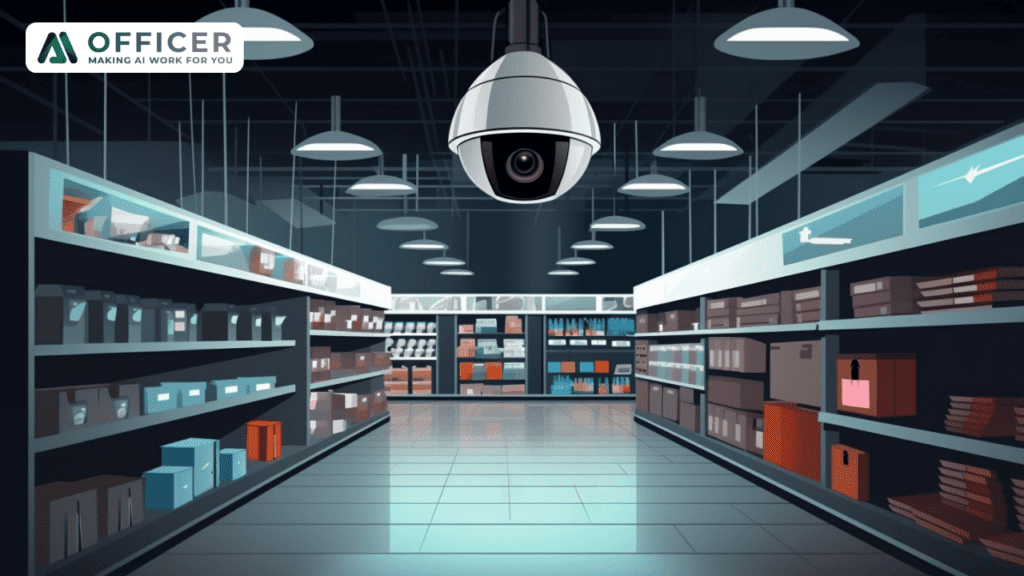
Battling shoplifting and internal theft is not just a day-to-day challenge; it’s a massive drain on resources and a constant threat to your bottom line for your Retail Outlet. In an era where retail losses are surging due to shoplifting, AI-powered surveillance isn’t just an option—it’s a necessity.
Between the U.S. retailers losing an estimated $61.7 billion to theft annually, and global studies showing how AI can cut shoplifting by up to 50%, there’s never been a more critical time to modernize your approach to security.
Forget about grainy CCTV footage that barely captures the face of a shoplifter; the new frontier is smart cameras that can identify suspicious activities in real-time, analyze customer behavior and even integrate with your point-of-sale systems to prevent theft from both customers and employees.
For Retailers, it’s imperative that they adopt AI Surveillance as quickly as possible and implement the same to secure their bottom line. .
This blog is your roadmap to how AI surveillance can not only protect your retail store from losses but also significantly enhance the customer experience.
Read on to transform your strategy.
THE PINNACLE OF AI INNOVATION : A MULTI-FACETED APPROACH
- The Oracle of Retail : Predictive Policing Inside Stores
By integrating AI surveillance, Retailers have slashed shoplifting rates by up to 25%.
Advanced AI algorithms sift through myriad data points such as customer behavior and positioning to forecast theft events before they happen, allowing proactive measures rather than reactive panic.
- Your Guardian at the Gate : Emotion Recognition for De-escalation
Would you believe us if we told you your security system could ‘feel’?
AI-powered cameras in pharmacies have been proven to reduce shoplifting rates by 50% through emotion recognition technology.
By picking up on subtle cues like agitated or nervous behavior, these cameras alert your security personnel, facilitating immediate action.
- The Hidden Salesman : AI as a Virtual Shopping Assistant
Sure, cameras can catch Shoplifters. But what if they could also serve as undercover Salesmen?
AI surveillance can track customer behavior and preferences to provide valuable insights into their spending habits.
These virtual assistants guide customers towards products they’re likely to purchase, improving sales while also mitigating theft.
- Green is the New Gold : Sustainability and Theft Prevention
Take a minute to think about the environmental cost of your security measures. A significant downside of shoplifting has been the adoption of excessive, wasteful packaging.
But smart AI surveillance systems reduce the need for such measures, allowing your business to be both profitable and environmentally responsible.
- Fortress of Solitude : Integration with Decentralized Systems
With theft and data breaches becoming increasingly sophisticated, so should your security measures.
Integrating your AI surveillance with blockchain technologies can make your data not just secure but also tamper-proof, elevating trust and reliability.
THE PROOF IS IN THE NUMBERS : TRIUMPH STORIES OF AI
- American Retailer Cuts Shoplifting by a Quarter : One significant U.S. retailer reduced shoplifting by 25% following the implementation of AI-powered surveillance.
- European Pharmacy Wins with Emotion Recognition : A pharmacy chain in Europe experienced a 50% drop in shoplifting rates by leveraging emotion recognition in their AI surveillance systems.
With theft statistics soaring and criminal methods becoming increasingly sophisticated, AI surveillance transcends being a luxury to become a retail necessity. It offers not just fortified security but also enhanced customer interaction and eco-friendly operations.
Interested in transforming your retail business with AI? Connect with our AI Officers today! Follow and Stay tuned to our Socials for more interesting insights!




